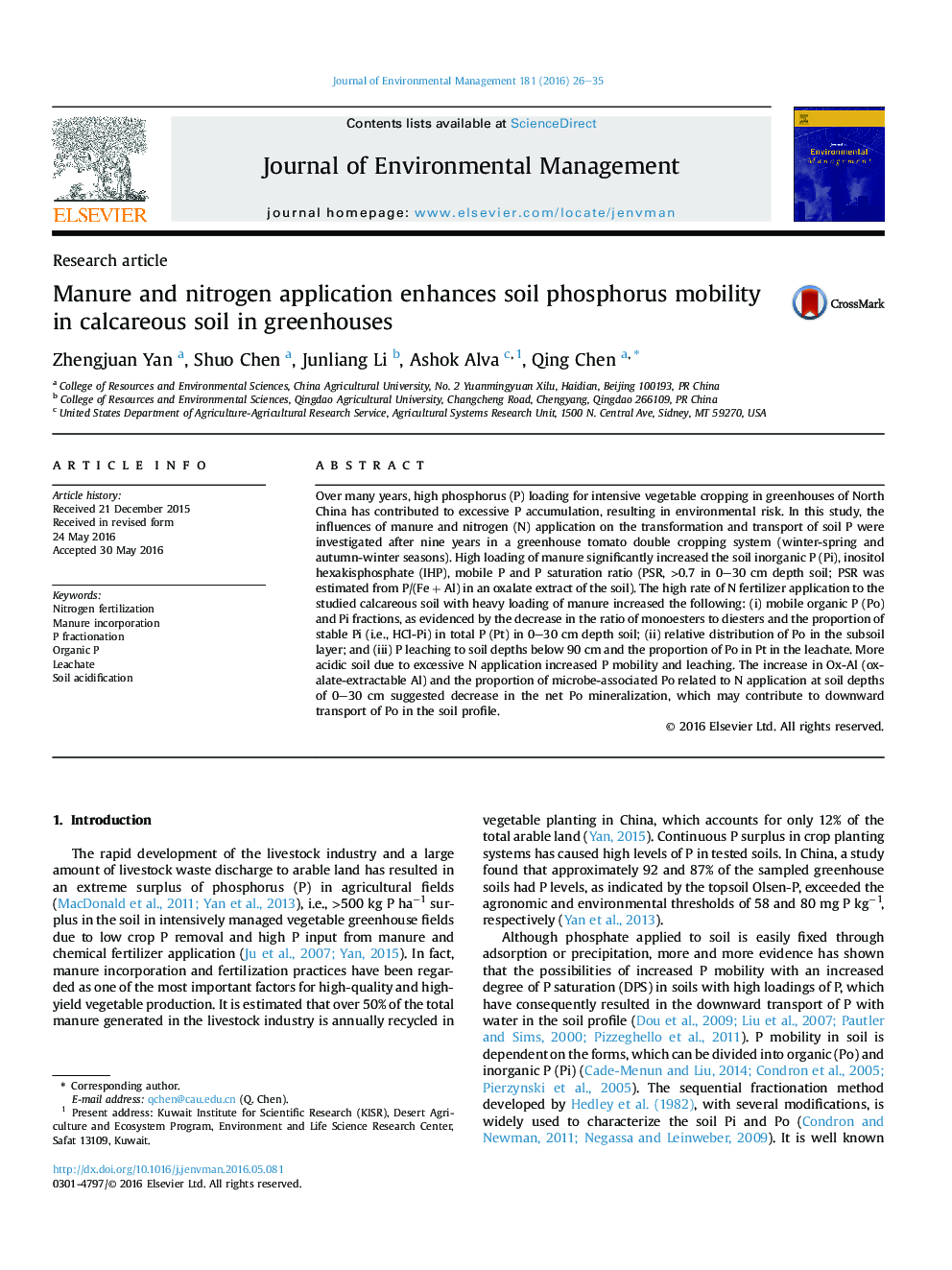| Article ID | Journal | Published Year | Pages | File Type |
|---|---|---|---|---|
| 7479351 | Journal of Environmental Management | 2016 | 10 Pages |
Abstract
Over many years, high phosphorus (P) loading for intensive vegetable cropping in greenhouses of North China has contributed to excessive P accumulation, resulting in environmental risk. In this study, the influences of manure and nitrogen (N) application on the transformation and transport of soil P were investigated after nine years in a greenhouse tomato double cropping system (winter-spring and autumn-winter seasons). High loading of manure significantly increased the soil inorganic P (Pi), inositol hexakisphosphate (IHP), mobile P and P saturation ratio (PSR, >0.7 in 0-30 cm depth soil; PSR was estimated from P/(Fe + Al) in an oxalate extract of the soil). The high rate of N fertilizer application to the studied calcareous soil with heavy loading of manure increased the following: (i) mobile organic P (Po) and Pi fractions, as evidenced by the decrease in the ratio of monoesters to diesters and the proportion of stable Pi (i.e., HCl-Pi) in total P (Pt) in 0-30 cm depth soil; (ii) relative distribution of Po in the subsoil layer; and (iii) P leaching to soil depths below 90 cm and the proportion of Po in Pt in the leachate. More acidic soil due to excessive N application increased P mobility and leaching. The increase in Ox-Al (oxalate-extractable Al) and the proportion of microbe-associated Po related to N application at soil depths of 0-30 cm suggested decrease in the net Po mineralization, which may contribute to downward transport of Po in the soil profile.
Related Topics
Physical Sciences and Engineering
Energy
Renewable Energy, Sustainability and the Environment
Authors
Zhengjuan Yan, Shuo Chen, Junliang Li, Ashok Alva, Qing Chen,
